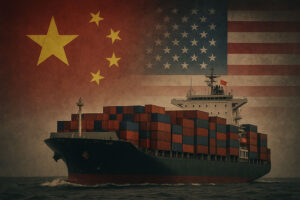Background: The First Wave of Controls
In April 2025, MOFCOM and the General Administration of Customs issued Announcement No. 18, placing export-license requirements on seven medium- and heavy-rare-earth elements: Samarium, Gadolinium, Terbium, Dysprosium, Lutetium, Scandium, and Yttrium, along with alloys, oxides, and magnets that contain them.
While this was not a full export ban, the license requirement introduced significant friction. Shipments faced approval delays of approximately 45 to 60 working days, and exporters were asked to provide detailed end-use and end-user declarations. During this time, Dura Magnetics and its global partners worked to reduce reliance on heavy rare-earth elements such as Dy and Tb, which had long been used to enhance intrinsic coercivity (Hci) in NdFeB magnets.
The Industry Response: Development of “HREE-Free” Neo Grades
To sustain supply continuity, manufacturers reformulated alloys marketed as “HREE-Free Neo.” During this period, some mills also revisited Holmium-modified NdFeB grades as a practical means of maintaining high coercivity without Dysprosium or Terbium. Because Holmium was not yet among the controlled elements, these formulations temporarily offered an export-license-free path for elevated-Hci magnets.
These compositions achieved high coercivity through refinement of powder microstructure and grain-boundary control, optimization of sintering and alignment processes, and substitution of additives such as aluminum, copper, niobium, or small amounts of Holmium instead of Dysprosium or Terbium. The result was a generation of high-performance magnets that could be exported without triggering license requirements.
Holmium’s Legacy Role in Magnet Alloys
After the 2011 rare-earth crisis, Holmium was adopted as a cost-effective substitute for Dysprosium and Terbium in high-coercivity NdFeB grades. Holmium itself is a heavy rare-earth element and therefore cannot be considered truly “HREE-free.”
As demand for Holmium grew, competing industrial uses, most notably its application in nuclear reactors as a neutron absorber to control fission, drove its cost upward. Manufacturers responded by shifting again, this time toward Terbium-assisted or Gadolinium-modified formulations combined with refined microstructural processing.
Holmium’s Re-Emergence in 2025
When MOFCOM’s Announcement 18 took effect in April 2025, many magnet producers revisited earlier alloy systems that had avoided heavy rare-earth dependence. Holmium reappeared in some of these formulations as a technically practical means of sustaining elevated coercivity in “Dy-free” and “Tb-free” NdFeB grades. Because Holmium was not included among the controlled elements at that time, mills could export these magnets without license review.
This renewed use of Holmium filled a short-term technical and commercial gap, particularly for H- and SH-series Neo grades where high Hci is critical. However, the workaround was short-lived. China’s October 2025 expansion added Holmium to the controlled list, effectively closing the substitution window and requiring export licenses for any magnet containing trace Ho content.
A Progressive Escalation of Controls
The addition of Holmium is part of a larger pattern in which Beijing has incrementally layered new restrictions on rare-earth materials:
- April 4 – Announcement 18: Introduced export-license controls on seven defined rare-earth elements and their derivatives.
- October 9 – Scope Expansion: Added Holmium, Erbium, Thulium, Europium, and Ytterbium, increasing the controlled list from seven to twelve.
- November 8 – Implementation Date: Export of the five newly added elements and all materials containing them will require formal MOFCOM approval.
- Late October – Announcement 61: Introduced de-minimis value thresholds (approximately 0.1 percent by value of Chinese-origin rare-earth content) and extraterritorial reach, meaning that products manufactured outside China may still require licensing if they contain Chinese-origin rare-earth materials or rely on Chinese processing technology.
Together, these steps form a deliberate escalation: first controlling which elements can leave the country, then closing substitution loopholes, and finally capturing global products through percentage-based content rules. This progression parallels earlier policies in which China reduced export quotas or adjusted thresholds once export volumes rose beyond policy targets.
Immediate Effects and Market Behavior
The November 8 cutoff is expected to trigger a short-term surge in Holmium-containing NdFeB exports as buyers and distributors attempt to secure shipments before the new rules take effect. Once implemented, licensing delays will again extend lead times and introduce new administrative hurdles.
Dura Magnetics continues to monitor these developments daily and is coordinating with mill partners to anticipate material-flow disruptions.
Looking Ahead: Parallels with 2011 and the Path to 2030
History provides context for the present. After the 2011 rare-earth crisis, China’s share of global mined REEs fell from roughly 95 percent to 55 percent within five years as other nations invested in mining and separation capacity.
Analysts now project that non-Chinese (“Rest of World”) magnet production could grow from about 10 percent today to 40 percent by 2030. The current wave of export controls may once again accelerate that diversification, driving new investment in domestic and allied supply chains across North America, Europe, Japan, and Australia.
What This Means for Dura Customers
Dura Magnetics views this situation as part of a continuing cycle rather than a sudden crisis. Our focus remains on ensuring continuity for our customers through proactive engineering and planning.
We are actively monitoring MOFCOM licensing procedures and processing timelines, supporting supplier reformulation and qualification of compliant, high-coercivity alloys, stocking critical materials to cushion short-term interruptions, and advising customers on design and sourcing options to maintain performance while minimizing risk.
Our Position and Commitment
The definition of “HREE-Free” has shifted again, but Dura’s mission has not. We remain committed to engineering reliable magnetic solutions and providing transparent, technically grounded communication in an evolving global market.
For program-specific guidance or additional context on how these developments may affect your material selections, please contact your Dura Magnetics representative.

